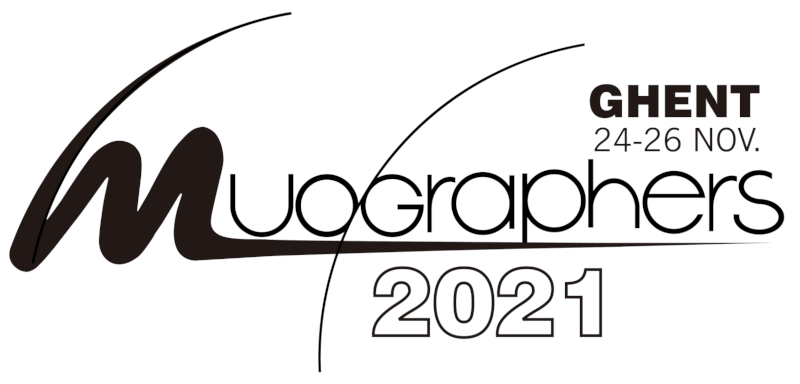Speaker
Description
Muon tomography is a non-invasive technique able to scan the internal density of large structures. This technique infers the density of an object by tracking the number of muons received by a detector, before and after traversing a structure. The amount of density met by a muon on its path minimizes its survival probability in a predictable manner, hence diminising the average flux received by a detector [1]. The incident direction (defined by the zenital angle) of the detected muons is reconstructed by means of a detector composed of a 3 scintillators panels [2],[3], allowing to produce 2-D density images.
To evaluate the degree of absorption caused by the density of structure, there are two key components: (1) the input flux (open-sky flux) which is infered theoretically, and (2) the output flux, measured by a detector. Both play an important role in estimating the density map of a structure. However, due to the dependancy of the open-sky flux on many factors (zenith angle, detector altitude, geographic positioning, and upper atmosphere state), it is challenging to estimate it properly. The goal of this study is to improve the current way in which this estimate is done.
Two approaches are generally possible to estimate the open-sky flux. The first is based on semi-empiric models (Tang [4], Shukla [5], Gaisser [6]...). The parameters of these formulations are calibrated using data sets recorded at specific locations and elevations. Analytical or empirical correction factors are then used to extrapolate these values to the desired survey elevation (z) with a simple formula [7] and take into account the atmospheric conditions influence on muon production [8],[9]. The second approach makes use of CORSIKA, a Monte Carlo driven Nuclei-Hadron interaction model used for cosmic shower simulation [10]. It has been used to simulate the influence of the temperature and the density of the atmosphere on the production and buffering of muons, as well as the effect of the geomagnetic field and the detector elevation. Both of these approaches have to overcome issues with extreme zenital angles.
We have evaluated the discrepancies between the analytical models, the CORSIKA fluxes, and laboratory measurements. Inter-comparision of these different approaches are used as a mean to validate our CORSIKA numerical experiment. Then, we analyze the geodesic effects on the muon flux in terms of energetic composition with varying magnetic field, altitude and density distribution of the atmosphere. General mechanisms governing the ground-level muon flux are then discussed.
[1] M. Rosas-Carbajal, Kevin Jourde, Jacques Marteau, Sébastien Deroussi, Jean-ChristopheKomorowski, and Dominique Gibert. Three-dimensional density structure of LaSoufrià ̈re de Guadeloupe lava dome from simultaneous muon radiographies and gravitydata.Geophysical Research Letters, 44(13):6743–6751, July 2017.
[2] J. Marteau, D. Gibert, N. Lesparre, F. Nicollin, P. Noli, and F. Giacoppo. Muons to-mography applied to geosciences and volcanology.Nuclear Instruments and Methodsin Physics Research Section A: Accelerators, Spectrometers, Detectors and AssociatedEquipment, 695:23–28, December 2012.
[3] N Lesparre, J Marteau, Y Déclais, Dominique Gibert, B Carlus, Florence Nicollin, andBruno Kergosien. Design and operation of a field telescope for cosmic ray geophysicaltomography. page 11, 2012.
[4] Alfred Tang, Glenn Horton-Smith, Vitaly A. Kudryavtsev, and Alessandra Tonazzo.Muon simulations for Super-Kamiokande, KamLAND, and CHOOZ.Physical ReviewD, 74(5), September 2006.
[5] Prashant Shukla and Sundaresh Sankrith. Energy and angular distributions of atmo-spheric muons at the Earth.arXiv:1606.06907 [astro-ph, physics:hep-ex, physics:hep-ph],June 2016. arXiv: 1606.06907.
[6] Thomas K. Gaisser, Todor Stanev, and Serap Tilav. Cosmic Ray Energy Spectrum fromMeasurements of Air Showers.arXiv:1303.3565 [astro-ph], March 2013. arXiv: 1303.3565.
[7] Thomas Hebbeker and Charles Timmermans. A compilation of high energy atmosphericmuon data at sea level.Astroparticle Physics, 18(1):107–127, 2002.
[8] Matias Tramontini, Marina Rosas-Carbajal, Christophe Nussbaum, Dominique Gibert,and Jacques Marteau. Middle-atmosphere dynamics observed with a portable muondetector.arXiv preprint arXiv:1909.02069, 2019.
[9] Kevin Jourde, Dominique Gibert, Jacques Marteau, Jean de Bremond d’Ars, Serge Gar-dien, Claude Girerd, and Jean-Christophe Ianigro. Monitoring temporal opacity fluctua-tions of large structures with muon radiography: a calibration experiment using a watertower.Scientific Reports, 6(1), September 2016.
[10] Dieter Heck, G Schatz, J Knapp, T Thouw, and JN Capdevielle. Corsika: a monte carlocode to simulate extensive air showers. Technical report, 1998.
